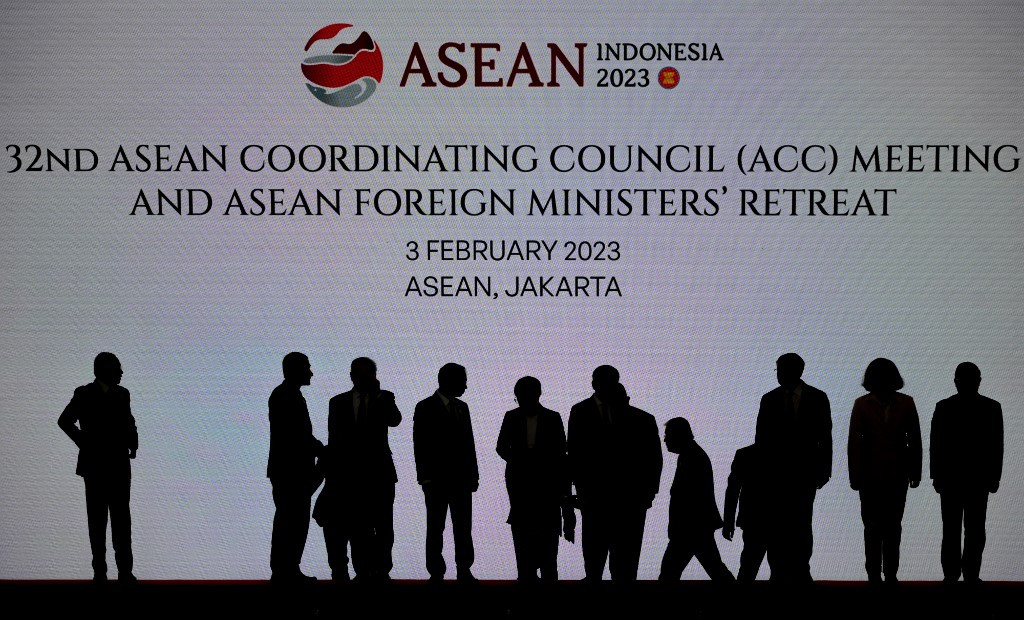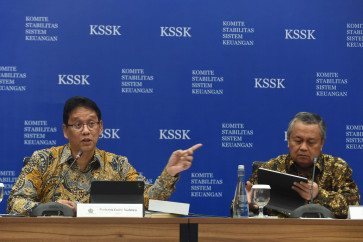Popular Reads
Top Results
Can't find what you're looking for?
View all search resultsPopular Reads
Top Results
Can't find what you're looking for?
View all search resultsIndonesia’s leadership in ASEAN’s energy transition
Following up on its G20 presidency with its ASEAN chairmanship, Indonesia can do more to lead the bloc in its energy transition toward energy security and sustainability, and thus regional stability and development.
Change text size
Gift Premium Articles
to Anyone
I
ndonesia secured one of the largest climate investments in the world during its Group of 20 presidency. Still, there are signs of concern regarding Indonesia’s modest ambition. More robust target and strategy will be the key drivers in attracting more clean energy investments.
Indonesia has placed itself in a global position by holding the ASEAN chairmanship in 2023, after successfully hosting the G20 Bali Summit in 2022. As the new ASEAN chair, Indonesia finds on its plate the 2025 ASEAN targets on renewable energy (RE) and energy efficiency (EE) as reflected in the ASEAN Plan of Action for Energy Cooperation (APAEC) Phase II: 2021-2025, on top of the G20-initiated programs, such as the Just Energy Transition Partnership (JETP), a financing scheme to retire the country’s coal power plants.
With its gross domestic product (GDP) of US$1.28 trillion, the Indonesian economy is the largest in Southeast Asia. Indonesia’s population makes up 40 percent of the total ASEAN population. Its large population reflects on the total final energy consumption (TFEC) equaling 22 million tonnes of oil equivalent (Mtoe), or a quarter of ASEAN’s TFEC (87 Mtoe) in 2020, indicating that the country could set higher clean energy targets and nationally determined contributions (NDCs).
Indonesia set the RE target for the primary energy supply mix to at least 23 percent in 2025 and at least 31 percent in 2050, as promulgated in Presidential Regulation No. 22/2017.
According to a foreign ministry spokesperson, Indonesia will carry over the priority issues from its G20 presidency to its ASEAN chairmanship. One example is the Bali Energy Transition Roadmap, a roadmap to double worldwide progress in EE by 2030 and to boost RE shares in the primary energy mix by 2025 to at least 30 percent, or 7 percentage points higher than the current ASEAN target of 23 percent. Another is the Indonesia Energy Transition Mechanism Country Platform, a platform with a vision similar to the JETP.
Through the Office of the Coordinating Economic Affairs Minister, Indonesia has set its priorities for the energy sector via the Priority Economic Deliverables for Indonesia’s ASEAN chairmanship in 2023, which includes developing the energy transition financing mechanism and energy security through robust RE utilization.
According to the 7th ASEAN Energy Outlook (AEO7), RE has made up 15.3 percent of Indonesia’s total installed capacity as of 2022. The AEO7 projects that Indonesia can expand its RE share to 45.2 percent by 2050 by maintaining the current RE policies (AMS target scenario). However, coal will still comprise up to 34 percent of installed capacity in this projection. Therefore, Indonesia needs to accelerate its RE attainment to align with its target of reaching net zero by 2060.
Indonesia’s updated NDC projects unconditional 2030 emission reductions by 915 million tonnes of carbon dioxide equivalent (MtCO2eq) compared to the business-as-usual scenario. In comparison, the AEO7 has projected emission reductions by 940 MtCO2eq by 2030 if ASEAN is on track to achieve its APAEC target scenario.
These projections indicate Indonesia’s significant contributions to ASEAN’s emissions reduction, as well as urgency for the country to keep increasing its energy transition efforts to reach its NDC targets, which is to reduce greenhouse gas (GHG) emissions by 31.9 percent (unconditional) and 43.2 percent (conditional) from its business-as-usual scenario by 2030.
Indonesia needs to ramp up its RE targets in contributing to ASEAN’s RE share and inspire the region on how to transition successfully to RE.
There are several ways to realize these targets. The first way is to optimize fossil fuels to maintain energy security during the transition. Despite emitting GHG, fossil fuels, especially gas, have a critical role in “bridging” the energy transition. It provides countries with energy resiliency and a buffer against unexpected events that can disrupt the energy supply chain as they shift gradually to RE options. Carbon capture, utilization and storage (CCUS) will be critical to balance energy security and sustainability.
The second way is to enhance the dispatch ability of RE sources. Indonesia needs to prioritize fulfillment of the Priority Economic Deliverables (PED) set for ASEAN, particularly strengthening energy security through interconnectivity and market integration. This includes enhancing grid interconnection to maximize RE resource potentials for hydropower, geothermal, bioenergy, solar and wind. These efforts will support the increasing RE dispatch ability and the development of a more flexible power grid, as well as higher utilization of energy storage, to balance intermittent energy sources.
Finally, the third way is to finance the transition. Nuki Agya Utama, executive director of the ASEAN Centre for Energy, has recommended the ASEAN member states (AMS) seek financing from beyond the region to develop low-carbon investment.
Currently, limited public funding makes up most of the funding sources used to fund sustainable energy investments in ASEAN. With a continually rising inflation rate and many economic outlooks showing grim economic projections for this year, government spending may be directed toward tackling rising prices and maintaining financial stability, which may result in less spending for low-carbon investments.
In financing the energy transition, Indonesia has initiated several innovative ways. For example, the Finance Ministry has built strategic partnerships with multilateral grant, financing, knowledge, technical and investment partners. This effort needs to be significantly amplified, as Indonesia has a massive potential to lead ASEAN’s RE deployment.
To conclude, Indonesia holds a unique and vital position as both the ASEAN chair and the largest country in the region. In this role, it can play a crucial role in improving RE utilization to reach regional RE and EE targets. Indonesia can act as ASEAN’s patron to the world, securing funding and partnerships to enhance the region’s energy security for regional stability and economic development.
-- Researchers at the ASEAN Centre for Energy. The views in this article are personal.










